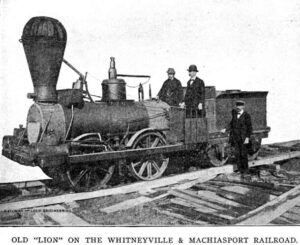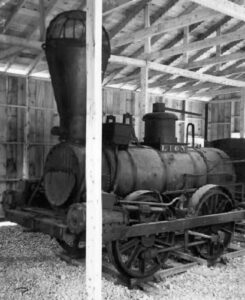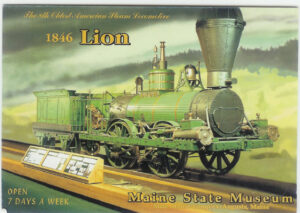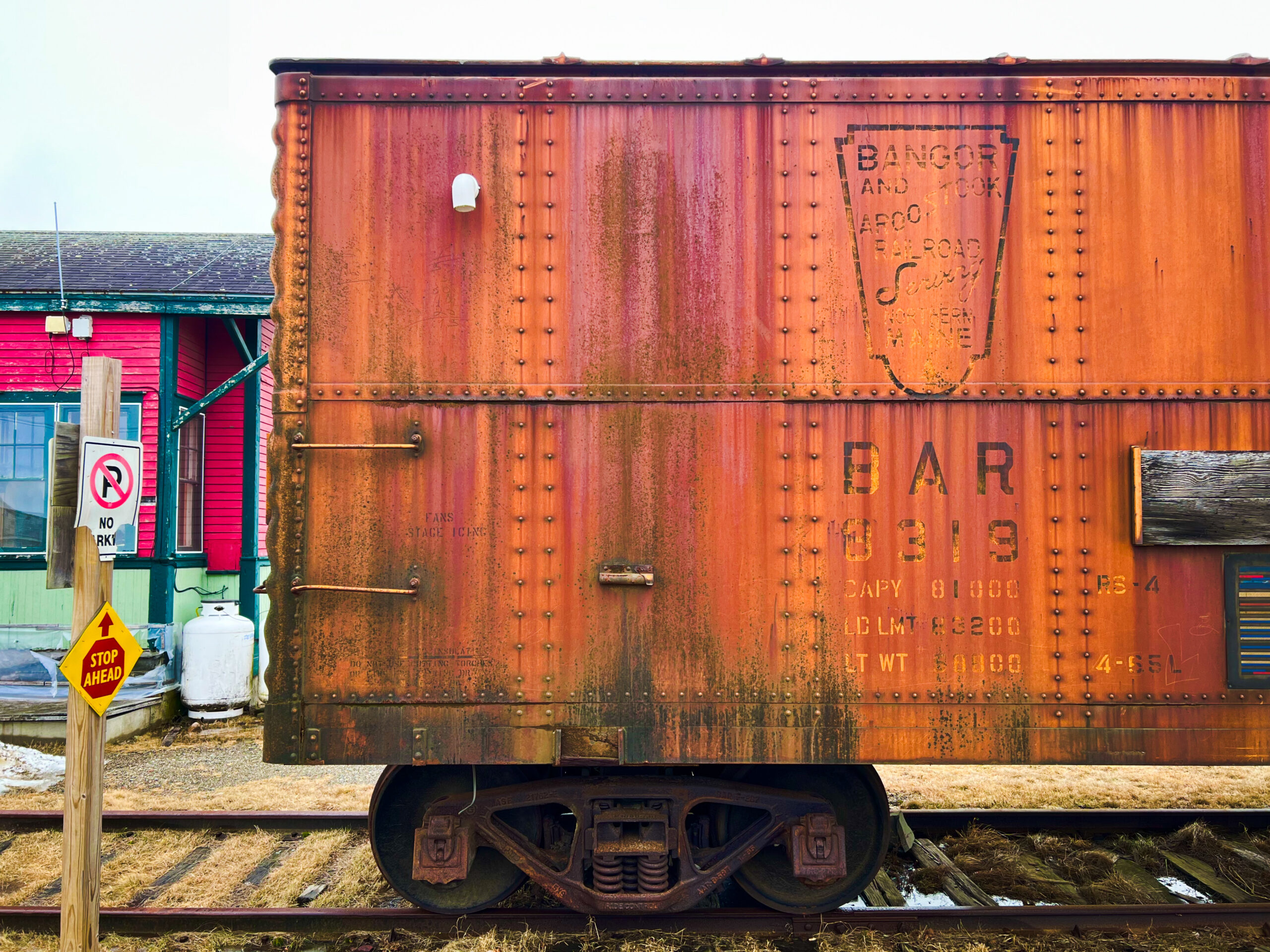The University of Maine at Machias (UMM) has an incredible history in many ways. However, one piece is seldom remembered, and few recall its fascinating engagement with UMaine. This is the Lion, a steam train built in 1843 that not only ran behind what is now UMM all through the late 1800s but went on to be stored at UMaine Orono (UMO), then UMM, before arriving at the Maine State Museum, where it still is on display in a restored state.
“We have a history here that seems to be buried,” stated Bernard “Bernie” Vinzani, a train aficionado as well as the Book Arts and Art professor at UMM. He recollected that the locomotive hauled mostly lumber and ice used for ice boxes on an 8-mile track from Whitneyville to Machiasport, where the freight would be shipped to various locations. The train ran directly behind UMM, along “wooden stringers” topped by a 3/4 inch strip of steel. Using a historical map, I could still find their path, and while the rails are long lost, the rail bed can still be seen and makes for an interesting hike. I found no signs of the tracks, apart from the groundwork, though Vinzani recalls finding various metal strips and metal spikes left over from the railroad. Over the railroad’s years of operation, few accidents occurred, however, according to a 1907 account from W. A. Hazelboom, several individuals were killed during the use of the route.

It must be mentioned that the “tour” the train went on before it found its way to the Maine State Museum. After being decommissioned in 1892, the train avoided being scrapped and was shipped to Portland, where rails were laid on the street so it could participate in a Fourth of July parade. On the parade route, the Lion made it a certain distance before breaking down, fascinatingly, in a spot where it then sat abandoned for many years. In 1905, it was decided that the train would be given to UMO, and in 1922, it appeared in UMO’s commencement exercises when several students pushed the train along, representing the coming of the university’s president. After this, the Lion was stored under the grandstands of the athletic field until a place was made for it in Crosby Hall at UMO in 1928. On June 12th, 1975, the Lion returned home to UMM, where it was on display in a makeshift barn, which stood where the pool of the Reynolds Murdock Center is now. After desires to restore the locomotive were proposed, it was brought to Augusta, where it is today.

Vinzani also informed me that the Lion is an open-cockpit (meaning the conductors were exposed to the elements) steam locomotive was mostly powered by burning wood. The engine has approximately 100 horsepower and weighs around 9 tons with its tender. Also, he discussed how the train worked in conjunction with two other similar locomotives, the Phoenix and the Tiger. Unfortunately, both of these were scrapped after they were decommissioned. The Lion escaped this fate because it was built from an oak frame, as opposed to steel.
The train ran frequently until 1892, when the rails began to fall victim to rot. Eventually, the route was in such disrepair that the train could not move at a rate much faster than a walk.

“We had this opportunity… to have it be a center point for any historical society building in town… It is part of the heritage [of Machias], and it would be nice if it eventually could come back and not be at the Maine State Museum,” Vinzani voiced when asked about how he felt about the train leaving Machias. Fascinatingly, Vinzani shares similar opinions as Hazelboom, who in 1907 stated, “The people in Machias felt that they were losing old and tried friends [when the trains were hauled away].”
If you would like to see the “Lion” for yourself, unfortunately, you may have to wait for a while. According to the Maine State Museum’s website, the museum is currently closed due to renovations and is not projected to reopen until 2025.
Vinzani went on to state how he wishes for Machias’s history to be “brought out” more. “It would be nice to at least have some plaques along the way,” he continued, voicing how my classmates and I should push for more to be done with the town’s history. If this fascinating piece of history just happened to be hidden in the forest behind the University of Maine at Machias, imagine what you might find right in your own backyard. “Machias is great like that,” someone once told me in regards to findings like this in the woods. Even if not Machias, it really is “Maine is great like that,” as wherever you look, you’ll find something incredible and historic in the woods.






